INTRODUCTION
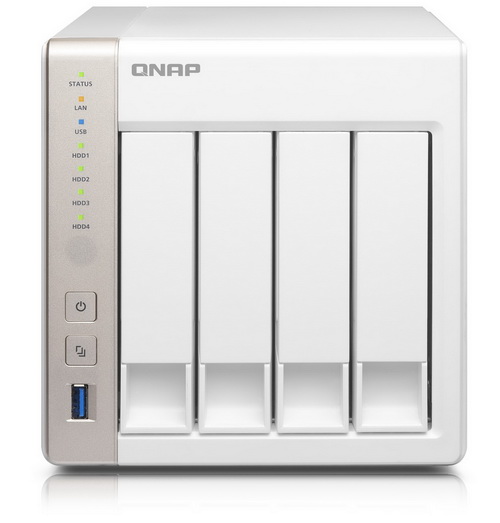
Where i live the public sector is technologically outdated to say the least (many computers still run on Windows 98, how about that?) so you can imagine how surprised i was when i visited the local town hall and saw a NAS server standing tall right next to several old systems with CRT screens. Well it turns out that this NAS server is used solely for local backup and already counts 3 years but still it was nice to see that things are progressing, even here. That being said a couple of weeks ago i mentioned that the leading NAS manufacturers like QNAP, Thecus and Synology have released several new models so it was really just a matter of time before some of them landed at our doorstep. Last time we thoroughly checked the TurboNAS TS-470 Pro by QNAP and although it's quite an expensive piece of technology it did turn out to be the fastest ever in our charts and earned the 1st place. Today we will be taking a thoroughly look at the TurboNAS TS-451 (-4G) NAS Server by QNAP which is aimed at people who just aren't interested in 10GbE compatibility and the extra firepower of the TS-470 Pro.
QNAP Systems, Inc., as its brand promise "Quality Network Appliance Provider", aims to deliver comprehensive offerings of cutting edge network attached storage (NAS) and network video recorder (NVR) solutions featured with ease-of-use, robust operation, large storage capacity, and trustworthy reliability. QNAP integrates technologies and designs to bring forth quality products that effectively improve business efficiency on file sharing, virtualization applications, storage management and surveillance in the business environments, as well as enrich entertainment life for home users with the offering of a fun multimedia center experience. Headquartered in Taipei, QNAP delivers its solutions to the global market with nonstop innovation and passion.
The TurboNAS TS-451 (-4G) is actually very similar in terms of specifications to the "normal" TS-470 model so here once again QNAP has used an quite powerful Celeron Dual Core CPU (model j1800) running at 2.41GHz (the OpenGL 3.0 compatible Intel(R) MESA DRI Bay Trail version 10.0 takes care of the graphics part) which they have paired with a total of 4GB DDR3 RAM (upgradable to 8GB) and 512MB of flash memory (DOM). Other features include two 1GbE RJ-45 Ethernet ports, two USB 3.0 ports, two USB 2.0 ports and an HDMI v1.4a port which can be used to output even the heaviest bitrate 3D media on your TV set. he slight "downside" with the TurboNAS TS-451 is obviously not its specifications and features but rather its enclosure and drive trays which are made out of plastic but this isn't really the first time we've seen something similar so what we're interested in more is performance.
SPECIFICATIONS AND FEATURES

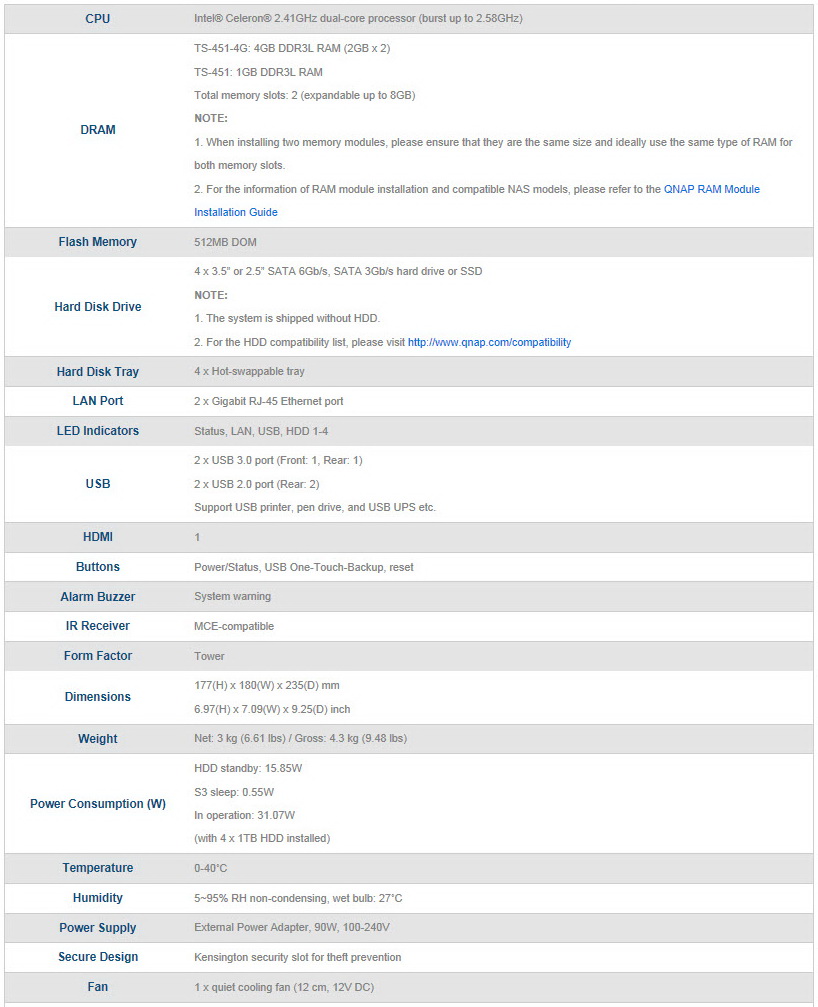

PACKAGING AND CONTENTS
As you can see the TS-451 is not only white but it also comes packed inside a white box that has a product picture at the front along with the company logo, the CPU frequency and the "on-the-fly transcoding" and HDMI 1080p output features.
Once again on the left side we see two small product pictures used to showcase the various parts of the product and right above them we see the main software features printed in 23 languages.
Some of the unit’s features along with most available stations are present on the right.
You can find a drawing of the way you can use the TS-451 at the rear of the box.
A thank you message is the first thing you will see once you open the box along with 5 2D barcodes (point to QNAPs social media pages) and the contents of the bundle.
Just like in the past the device is placed inside a plastic bag and between two thick Styrofoam spacers while the rest of the bundle is placed inside a second cardboard box.
The bundle is not very rich but you get exactly what you need so aside the TS-451 you will get the power adapter and cord, two Ethernet cables, two plastic bags with HDD mounting screws and the quick installation guide.
THE TURBONAS TS-451
The TS-451 follows the typical design by QNAP but this time over the exterior of the enclosure is made out of plastic. Size-wise nothing new here since the TS-451 measures 235mm in length, 180mm in width and 177mm in height with a weight of 4.34Kg.
A small section on the left side of the chassis is perforated allowing hot air to exit.
The fascia is not new to us either so again here we see the on/off power button, one touch copy button, USB 3.0 port and the activity LEDs.
Unfortunately although quite sturdy the 4 drive trays are made out of hard plastic and can hold both 2.5" and 3.5" drives.
Moving at the rear of the TS-451 we find a 120mm exhaust fan, two GbE ports, one USB 3.0 ports, two USB 2.0 ports, HDMI port and a Kensington lock.
The device sits on 4 rubber feet.
Removing the top cover is very easy since the plastic enclosure slides open (you still need to remove the rear screws).
Our sample arrived with two ADATA 2GB 1600MHz SO-DIMM modules.
The CPU is passively cooled via a medium-sized heatsink.
We also find the same 512MB flash DOM by Apacer as we did with the TS-470/Pro models.
Again we made use of our Seagate Constellation ES.3 4TB drives to test the device.
SETUP
Last time we performed the explorer based setup procedure so this time we decided to take the Qfinder road. So you should head over to the official support page to download the latest program version.
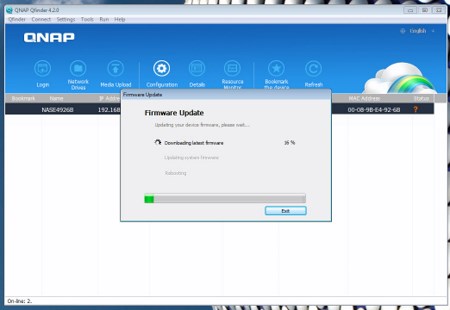
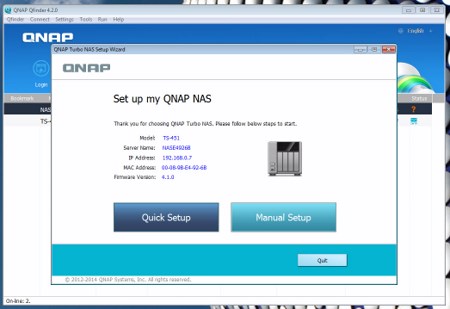
Through the Qfinder application not only can you find the IP of the NAS but you can also download the latest firmware and start the setup procedure (you will need to choose between quick or manual setup).
You can also setup the preferred RAID mode for the installed drives or leave it for later on.
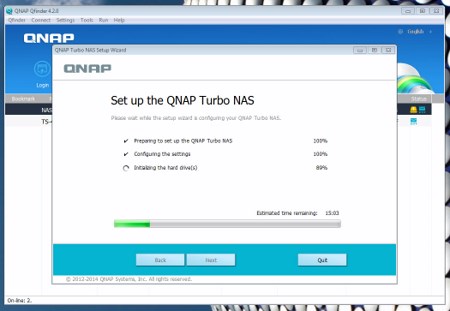
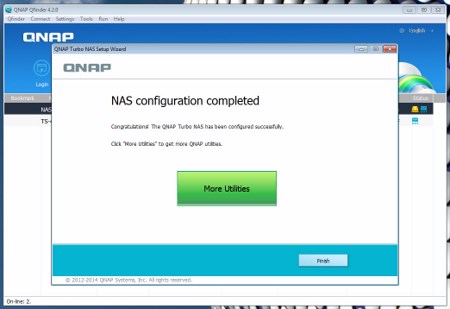
After you are done with all the settings the process takes less than 5 minutes to complete.
WEB INTERFACE PART 1
The main QTS login screen looks great as always.
The main screen of the QTS lists all the main available/installed stations.

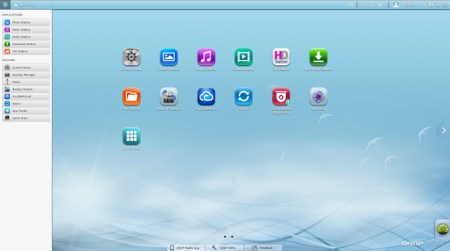
You can access the very detailed resource monitor from the lower left corner while a drop down start-like menu can be accessed from the top left corner.
Once again every available setting is available from the QTS control panel.
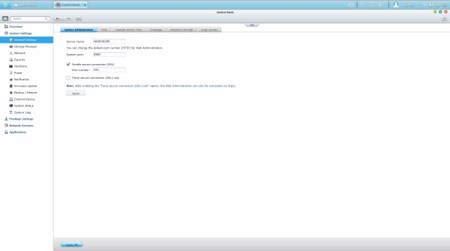
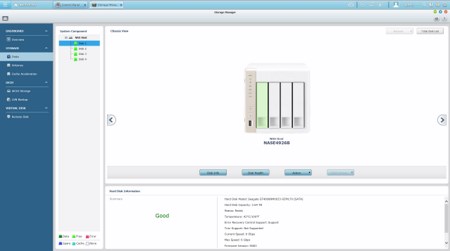
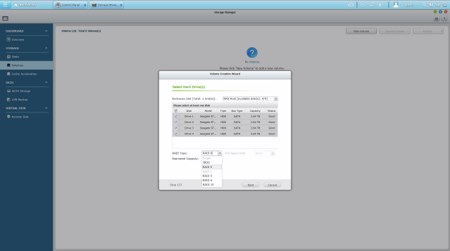

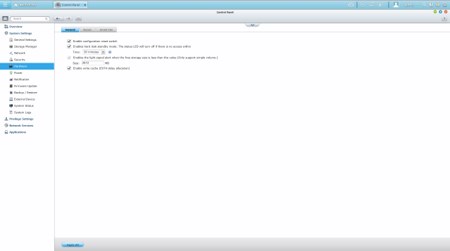
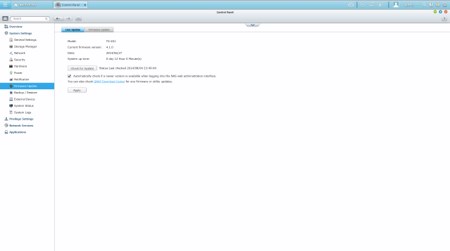
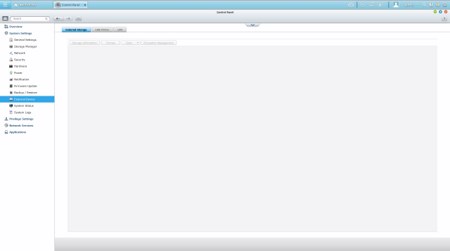
Via the System Settings menu you can set the name for the server, adjust time, set a password, specify your location, adjust the network IP, play around with power options, set notifications, check the state of the installed drives, create RAID and Virtual drives, enable/disable security settings, configure the speed of the fan, check hardware information, setup backup options, access external device settings, check the logs and of course perform firmware updates.
The Privilege Settings tab is very basic and allows you to create new users, assign those users to groups, setup shared folders, set specific quotas for each user and configure domain security.
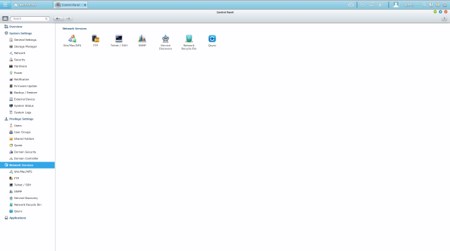

From within the Network Services menu you will find everything network-related including FTP settings, Telnet service settings and service discovery settings. You can also setup/configure the Qsync application which allows you to have your files synced between the NAS and your other internet capable devices at all times.
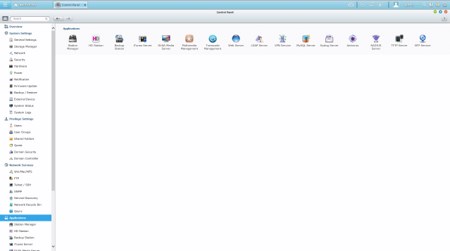
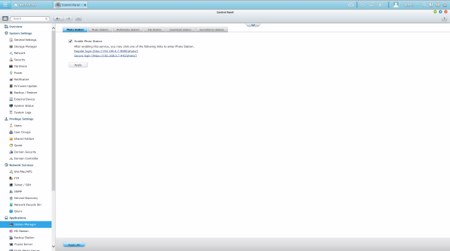
In order to use some of the installed stations you will need to enable them from within the Applications tab.
WEB INTERFACE PART 2
In order to install the HD Station and the XBMC app after (YouTube also needs HD station) that you will need to do it from this tab which was not found in previous QTS versions.

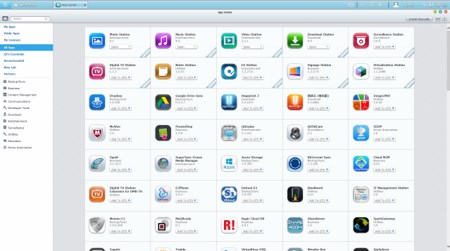
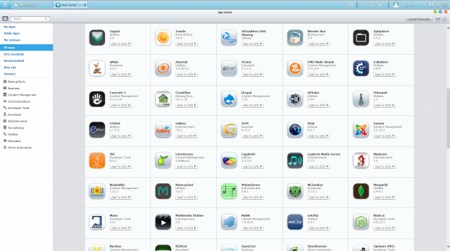
By default the QTS of the TS-470 Pro has several applications/stations installed but you can install a lot more from within the App Center.
Via the Photo Station you can see and share all your pictures with other systems in the network and of course wirelessly connected mobile devices.
With the Music Station you can stream and playback your entire music collection without switching to an external application.
One of the things i like about QNAP NAS servers is that you can use the preinstalled Download Station either to download torrent files or directly from HTTP/FTP.
As always the File Station allows you to transfer files to and from the NAS and looks quite a bit like the Windows explorer. However we strongly recommend transfering files through the windows explorer (My Computer - Network - NAS) since it's faster and problem-free.
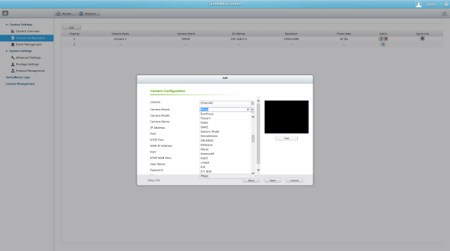
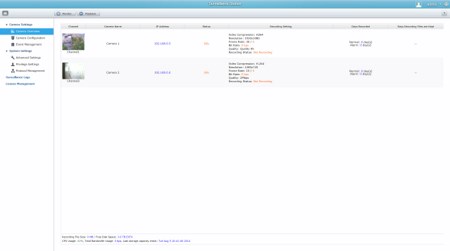
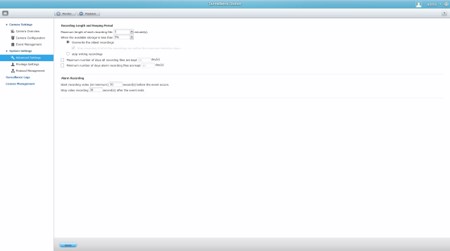
The Surveillance Station Pro remains pretty much the same and you can use it with a total of 42 IP cameras from a very large range of manufacturers (even if your camera is not present you can use the several compatibility modes). By default the application comes with a license for use with 2 IP cameras but you can purchase more from QNAP.
XBMC SOFTWARE
If you choose to connect the TS-451 to your TV set via HDMI you can not only access its basic functions but you can also use YouTube, Chrome and XBMC.
The XBMC application basically transforms the NAS Server into a HTPC thus you can use it from the comfort of your bed or sofa especially if you have the optional remote control.
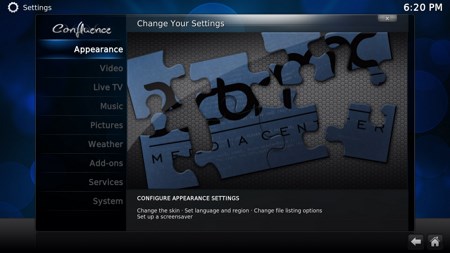
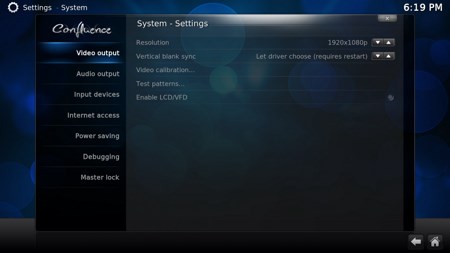
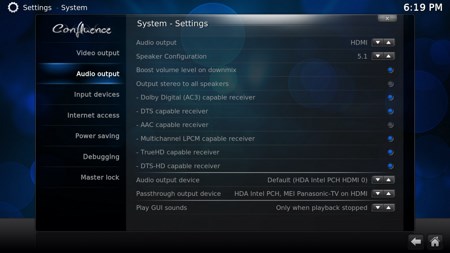
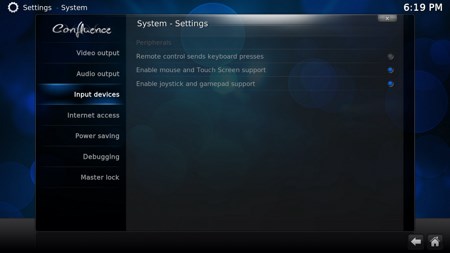
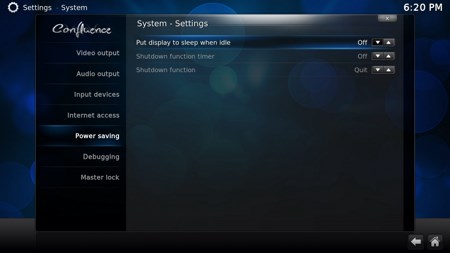
As always you have the option to personalize the XBMC application quite a bit (for example change the skin of the menus and set the region/language/audio language options). You also have access to a wealth of audio/video related settings as seen above.
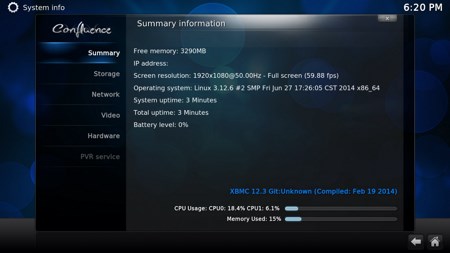
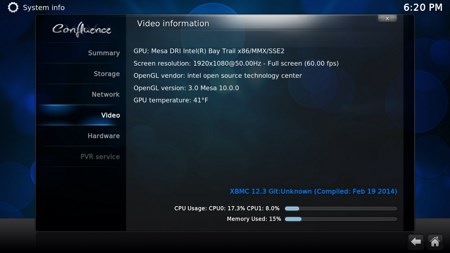
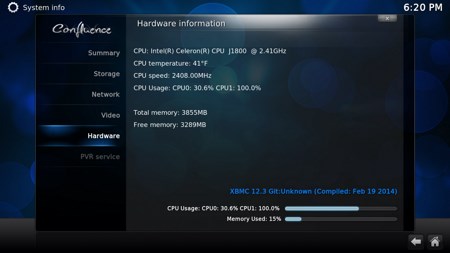
Important information like the hardware components of the unit are accessible through XBMC.
Again we used our Blu-Ray MKV rip of Avatar S.E (42GB) to test the playback capabilities of the device in hand and much like the TS-470 we didn't come across any issues while watching the movie so here are some screenshots for all of you to check and see what you can expect from the TS-451 (converted from BMP to JPG).
TESTING METHODOLOGY – PERFORMANCE RESULTS
Originally we had decided that since some of the NAS servers/devices we've tested in the past are no longer in our possession (naturally) we would keep performing the exact same testing methodology we did in the past for as long as possible in order to provide accurate comparison results. However since our real-life tests are not enough for some people we also decided to throw in ATTO and Crystal Disk Mark to cover the more demanding users (it will take time to "populate" those charts however). However as always we will be using Seagate Constellation ES.3 4TB SATA III hard disk drive(s) (in order to also perform RAID tests we were able to switch from the old ES.2 model to the ES.3 since we recorded no differences between them when used inside NAS servers) with the unit at hand and perform several upload/download tests with 10.9GB (Single) and 40,8GB (RAID) files. Tests are repeated a total of 4 times after which we record the average numbers (from the 4 peak ones) into our charts. Finally the network device used is the same Netgear DGN3500 Gigabit ADSL2+ Modem/Router we always use when performing tests on NAS servers.
SINGLE DISK TESTS

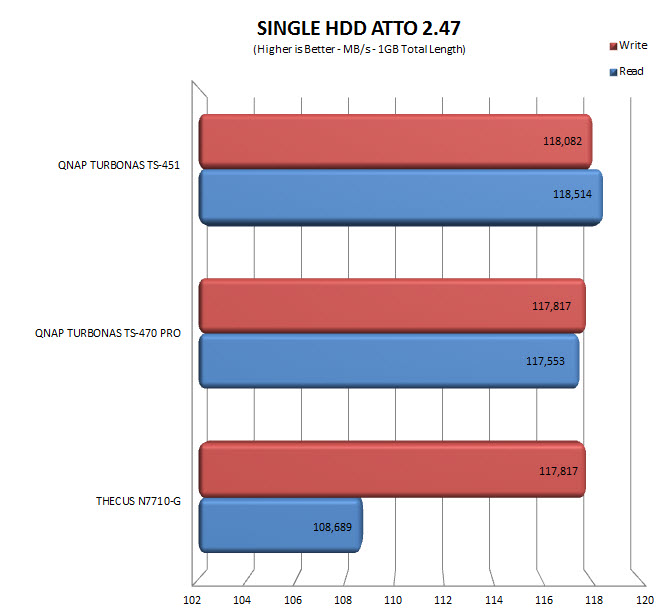
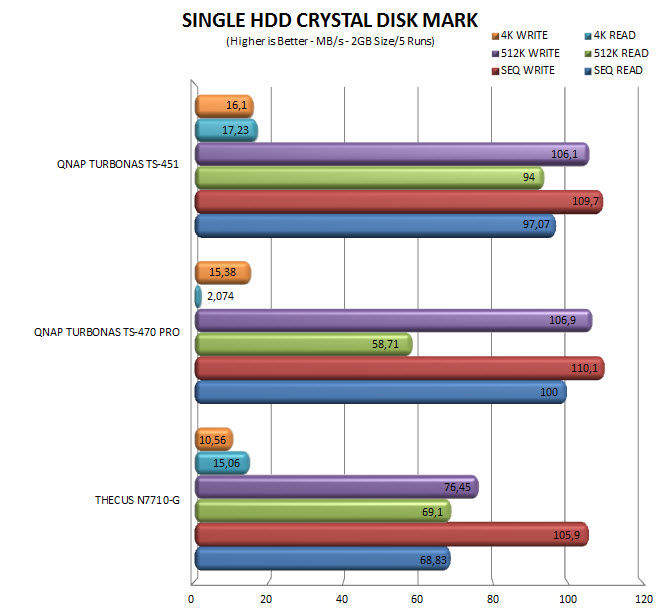
RAID TESTS


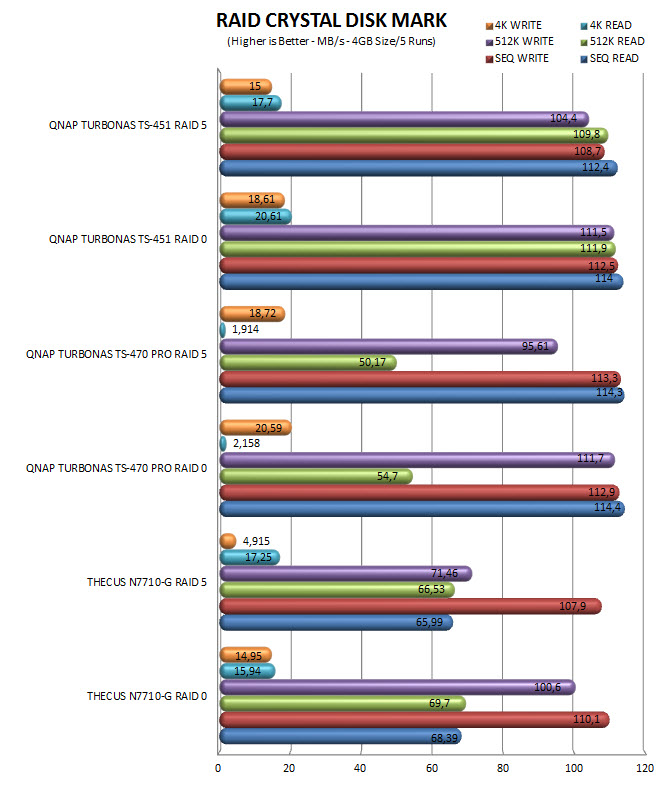
TEST RESULTS – TEMPERATURES / CONSUMPTION / NOISE
TEMPERATURES

POWER CONSUMPTION

NOISE LEVELS

CONCLUSION
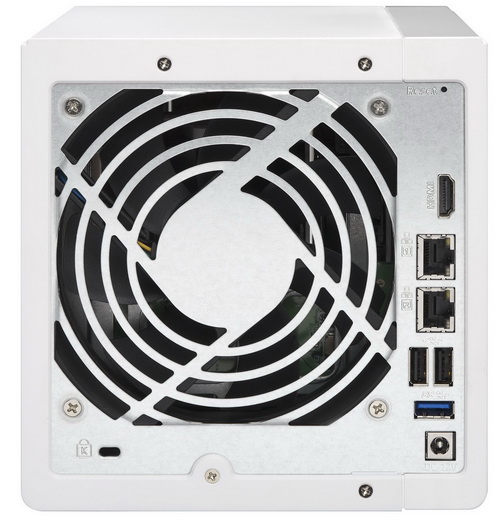
Although we've yet to finalize the details of our upcoming 10GbE testing equipment (we're trying to find the most compatible factory-ready solution for NAS devices) based on our "regular" 1GbE tests the TurboNAS TS-451 seems to be almost on par with the much more expensive TS-470 Pro and that's certainly not something we expected when it reached or doorstep roughly a month ago. Overall if we were to forget the 10GbE compatibility offered by the TS-470 Pro i could go as far as to say that the TS-451 is a better solution since it's just as fast, has less power requirements and ontop of that it's also quieter. Of course we really can't fail to mention that because of the plastic enclosure and bays the drives inside build slightly higher temperatures compared to the TS-470 Pro and its aluminum enclosure but that's not really as significant as the other two.
As already mentioned the TurboNAS TS-451 is much cheaper compared to the TS-470 Pro model and to be more specific you can currently find it for just USD599.99 inside the USA (Amazon.com) and for 660Euros inside the EU (Amazon.co.uk) so it basically ends up being roughly 50% cheaper in the USA and 30% cheaper in the EU. With this in mind i really don't know why anyone who's not interested in 10GbE connectivity would choose the TS-470/Pro over the TS-451 especially since you need to spend extra to get the 10GbE card for the first two. That being said if you are after a real beast in terms of power for heavy workloads and future 10GbE expandability then the TS-470/Pro is the line for you but if not then go ahead and grab the TurboNAS TS-451, you won't regret it and that's why we are giving it our Platinum Award.
 PROS
PROS
- Build Quality
- Intel Celeron J1800 Dual Core CPU
- Excellent Performance
- Features
- 4GB DDR3 RAM (Expandable To 8GB)
- 2 Gigabit Ethernet Ports
- 4 USB Ports (2xUSB 3.0 / 2xUSB 2.0)
- HDMI v1.4a Output
- RAID 0/1/5/6/10
- SATA III (6Gb/s)
- QTS 4.x.x OS
- Price (Compared To The TS-470/Pro Line)
CONS
- HDD Temperatures

 O-Sense
O-Sense





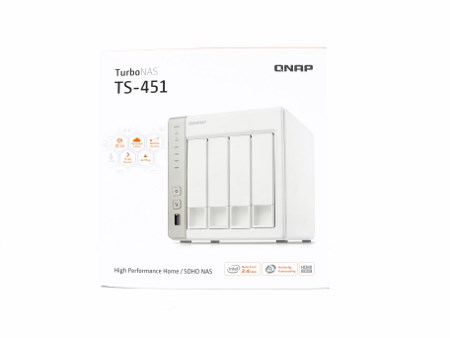
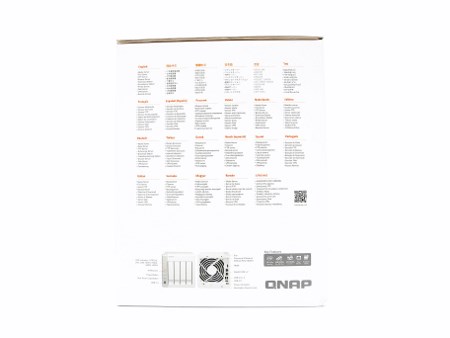

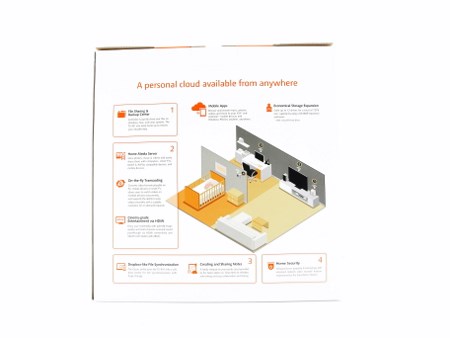

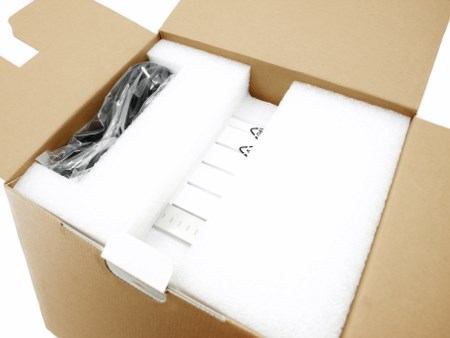

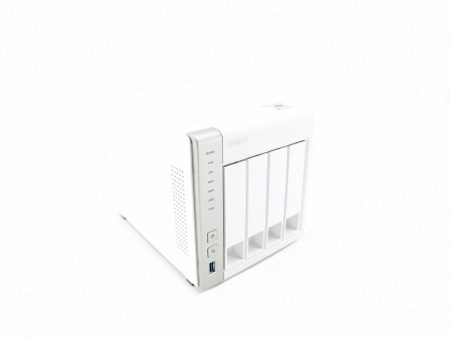
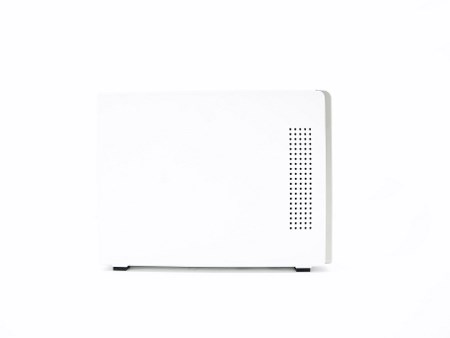
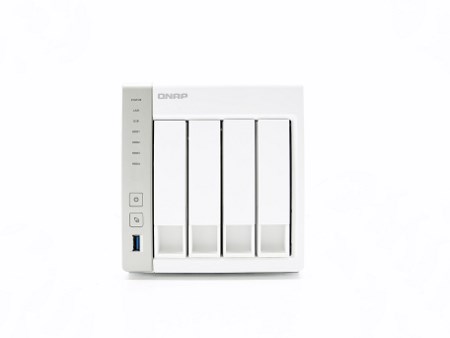
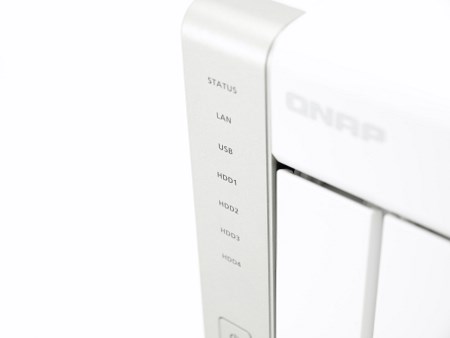
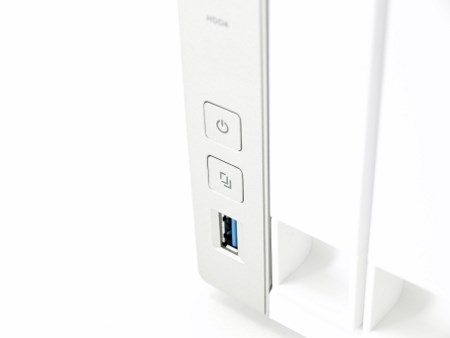
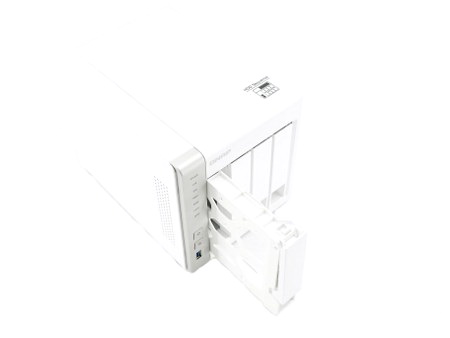

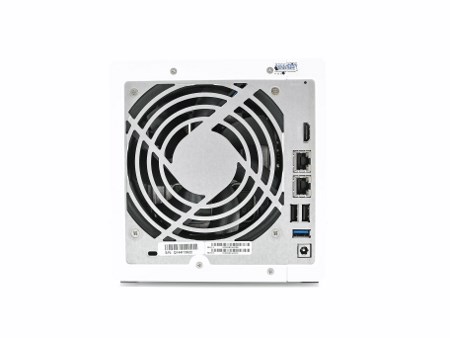
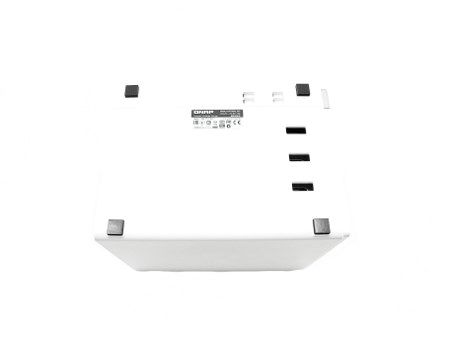
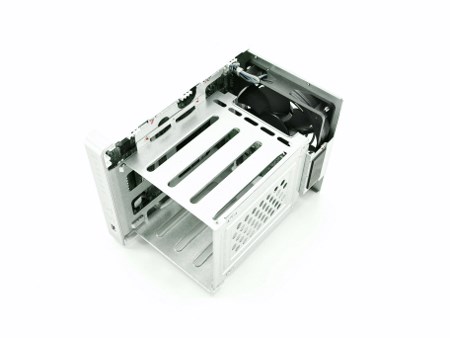
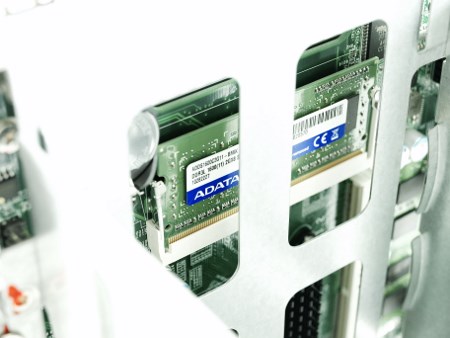
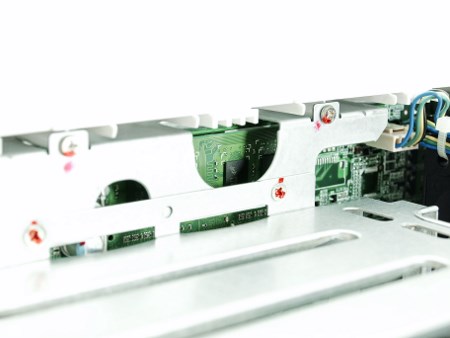
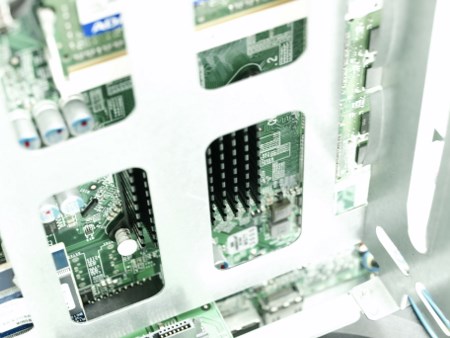
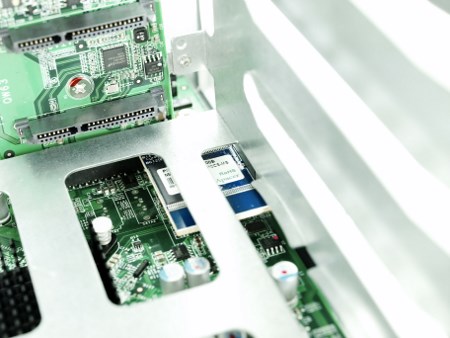
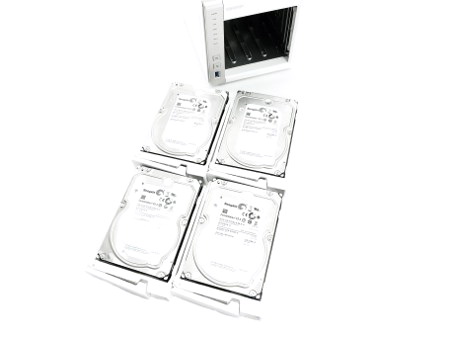
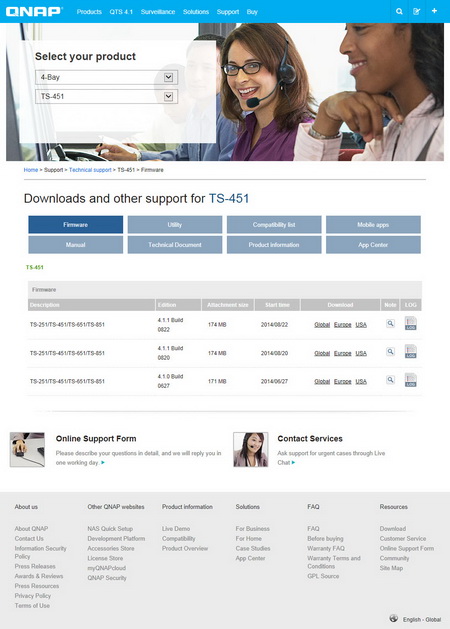
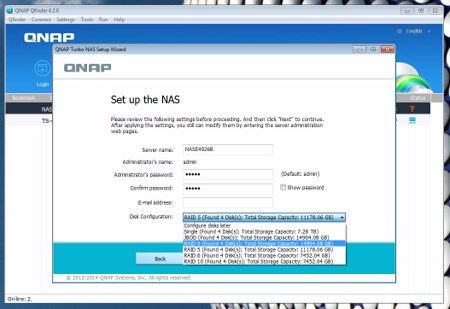

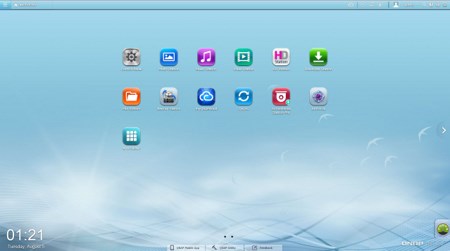
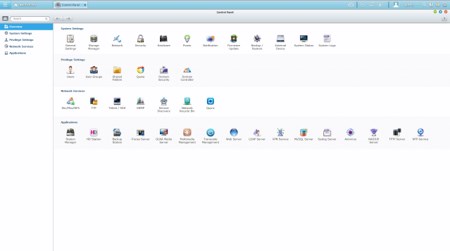
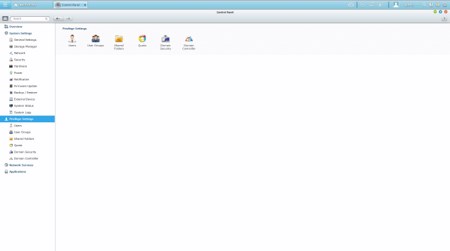
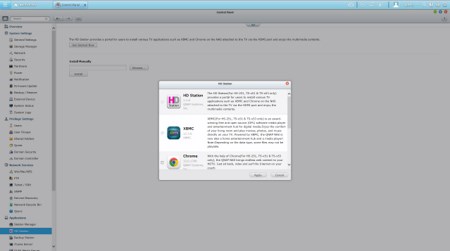
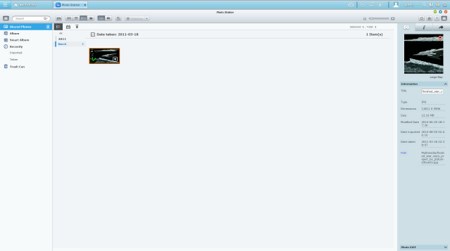

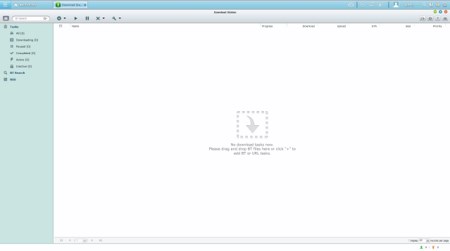
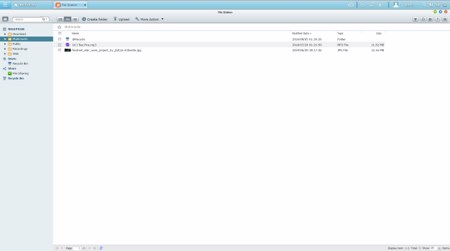
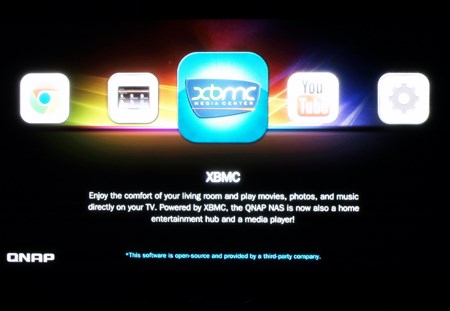






.png)

